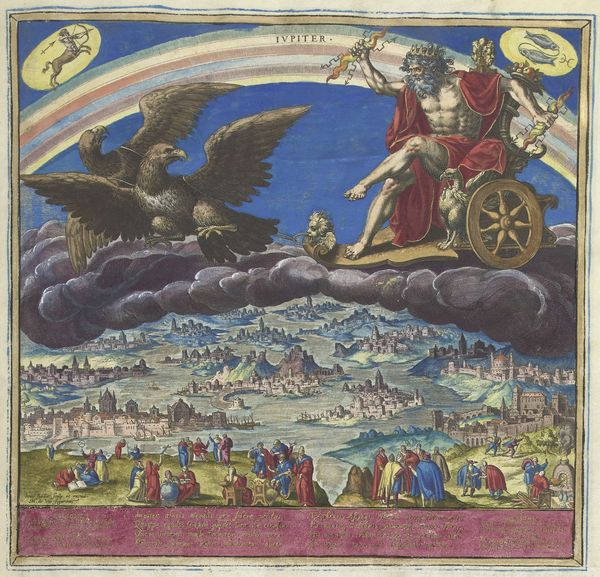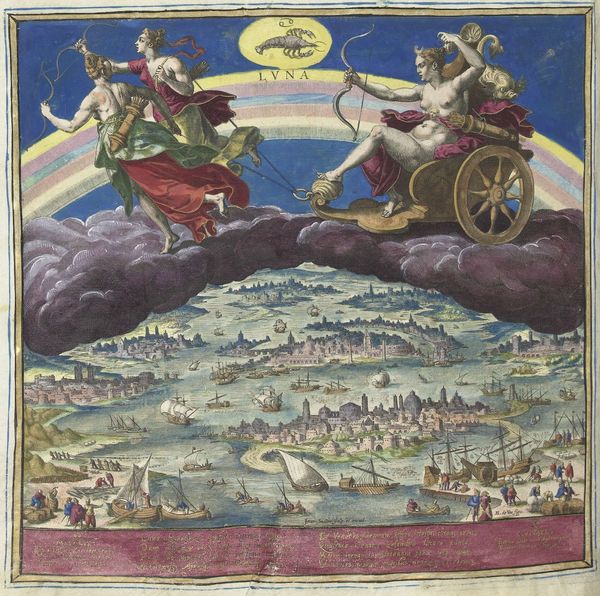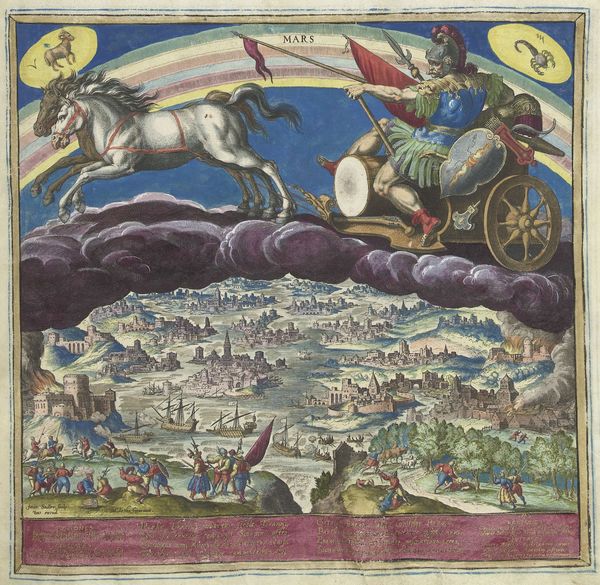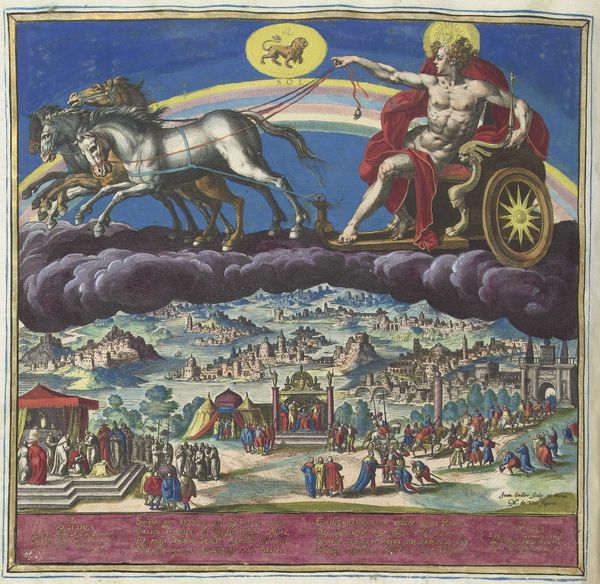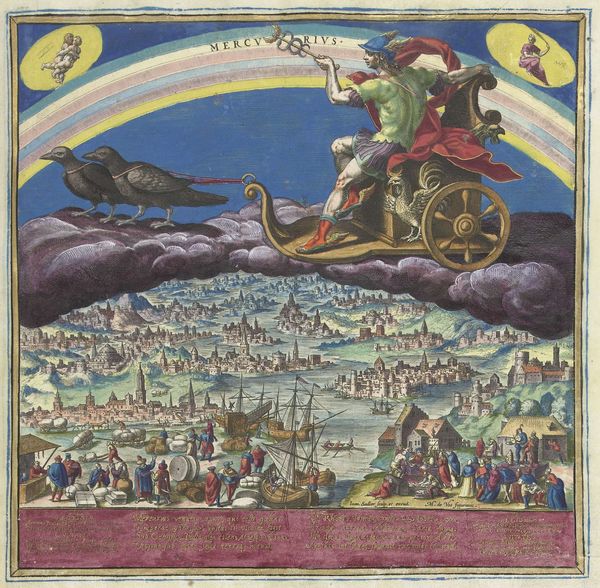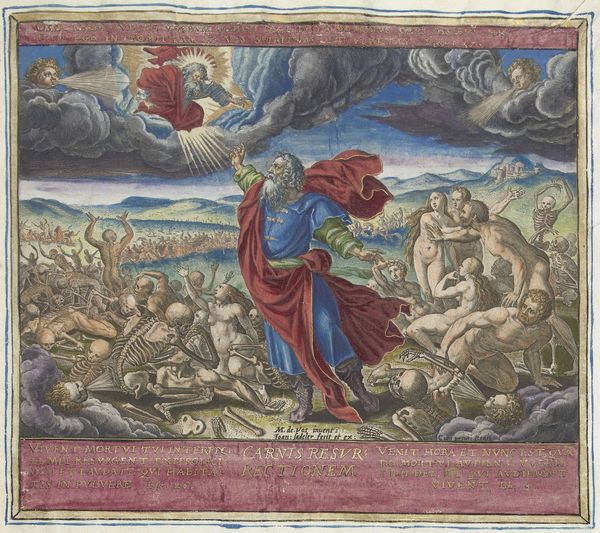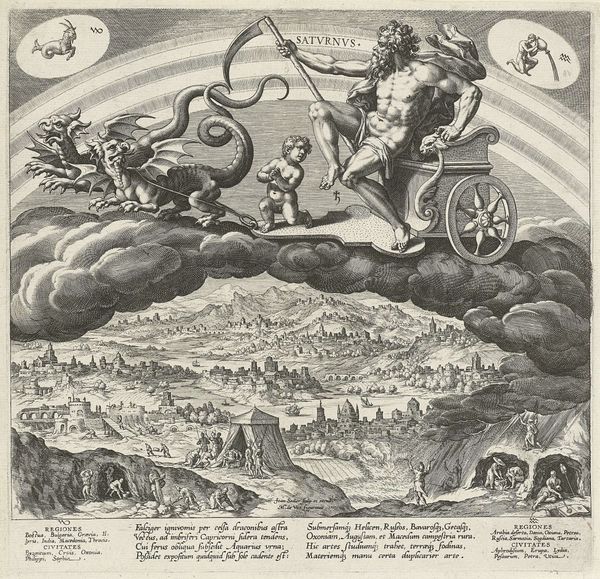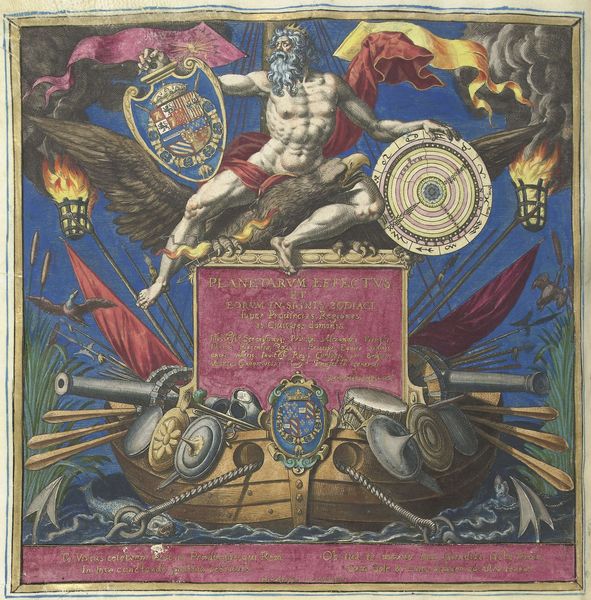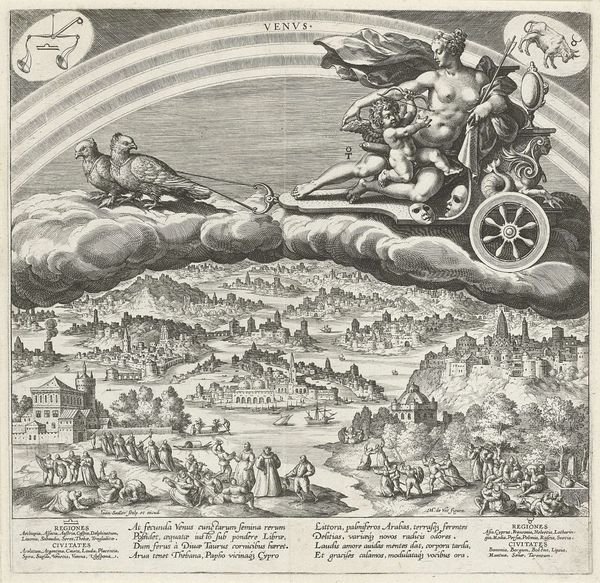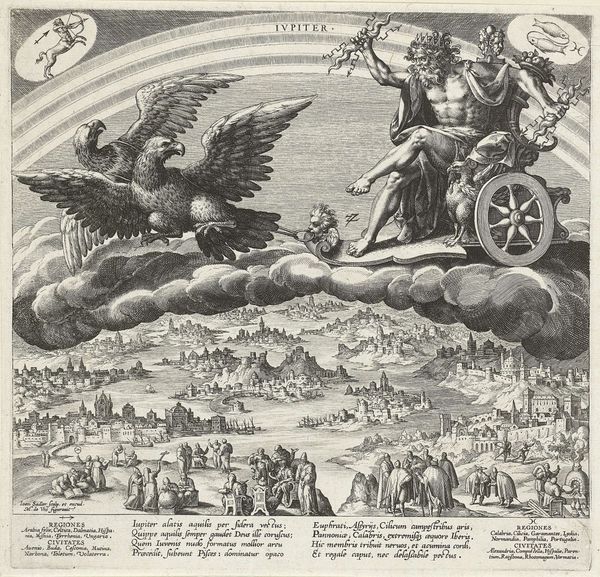
print, engraving
#
allegory
# print
#
landscape
#
mannerism
#
figuration
#
coloured pencil
#
cityscape
#
history-painting
#
engraving
Dimensions: height 235 mm, width 238 mm, height 538 mm, width 388 mm
Copyright: Rijks Museum: Open Domain
Editor: This is "The Planet Saturn and its Influence on the World" from 1585, created by Johann Sadeler I. It's an engraving, so a print, and it has so much detail. The first thing that strikes me is the contrast between the activity happening on earth versus the cold, somewhat frightening scene with Saturn in the sky. How would you interpret this work? Curator: The stark contrast certainly speaks volumes. Consider the material conditions embedded within its creation. The engraving process itself, the labor-intensive act of carving into metal, mirrors the toil depicted on Earth. The mines, the cityscape - all dependent on human exertion and the extraction of resources. Do you notice how Saturn looms, literally and figuratively, over this landscape of production? Editor: Yes, definitely. Saturn seems almost separate from the world below, but still, a source of influence, perhaps even oppression, through its depiction with hard labour and the extraction of wealth from below. Curator: Precisely. Sadeler, through the repeatable medium of the print, distributes this notion of power dynamics and the costs of labor. The allegory invites viewers to reflect on their own relationship to the means of production and consumption inherent in late 16th-century society. What’s reproduced isn’t only an image, but also an ideology about power! Editor: That’s fascinating! I hadn't considered the medium as actively contributing to the message about labor and power dynamics. It makes me think differently about prints in general. Curator: Indeed. This work reveals how artistic production itself, the making and circulation of images, is enmeshed in the very systems it depicts. Perhaps looking at other engravings we can uncover different approaches to discussing wealth and resource management through similar distribution channels.
Comments
No comments
Be the first to comment and join the conversation on the ultimate creative platform.

